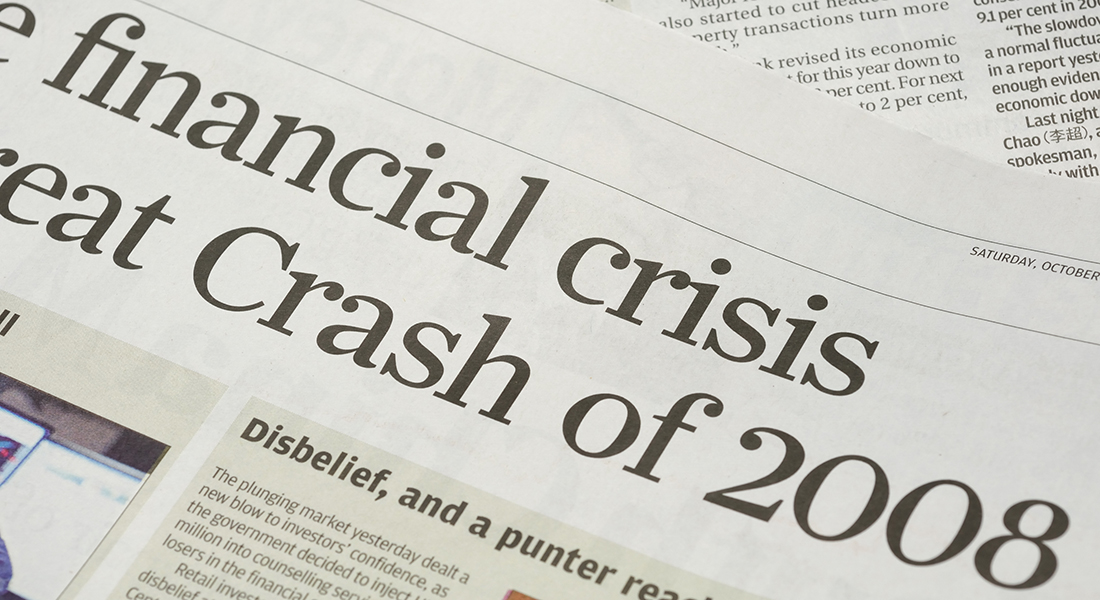
What Made The Financial Crisis Go From Bad To Disaster?
Hersh Shefrin
Even before Lehman Brothers failed 10 years ago last month, the financial crisis was bad. But it was the collapse of Lehman Brothers that tipped a bad situation into an absolute disaster, and brought the global financial system to the brink of collapse.
Lehman Brothers did not have to fail, and the decision that allowed that to happen was psychologically driven. For some years, I have thought it likely that this was the case, having written about it in my book “Behavioral Risk Management” and having taught the lesson to my risk management students at NYU.
Now a new book by Laurence Ball, titled “The Fed and Lehman Brothers,” documents the factors that drove the decision to allow Lehman to file for bankruptcy, one of the biggest financial failures in history. The book offers a compelling counterpoint to the official explanation behind the firm's downfall.
The official explanation is that because the value of Lehman’s collateral and net worth was so low, the U.S. government lacked the legal authority to save the firm. This view has been strenuously argued by the principal decision makers who chose not to rescue the company, former Treasury secretary Hank Paulson, former Fed chair Ben Bernanke, and former head of the Federal Reserve Bank of New York Timothy Geithner.
My view is that individual psychological issues impacting Paulson, and group psychology issues impacting the dynamics that characterized the communication among the three principals, were the true drivers of the decision. In my book, I discuss Paulson’s fear that a decision to rescue Lehman, following the decision to rescue Bear Stearns some months earlier, would result in him being remembered as “Mr. Bailout,” thereby leaving his conservative legacy in tatters.
In his book, Laurence Ball describes the communication dynamics among Paulson, Bernanke and Geithner. Although the authority to save Lehman belonged to the Fed, not the Department of the Treasury, by sheer force of personality, Paulson persuaded Bernanke and Geithner that the default position should be to let Lehman die. This strikes me as a classic case of groupthink, where members of a group are reluctant to challenge the position put forward by a strong leader.
The psychological issues around saving Lehman, both the event itself, and the subsequent spin, are incredibly interesting. Availability bias, which is a psychological bias about the overweighing of information that is easily recalled, can be very strong. Paulson, Bernanke and Geithner have worked very hard at delivering the message that Lehman Brothers could not have been legally rescued. Paulson complains that despite their efforts, they still are not believed. If he is correct, then their collective effort to exploit availability bias has failed. Still, until the publication of Ball’s book, there was very little written in the press about what truly drove the decision to let Lehman fail.
I argue that serious discussions about the financial crisis need to take place against the backdrop of Hyman Minsky’s ideas about financial instability. The Mr. Bailout issue did not cause the financial crisis. Rather, it was all the issues that Minsky stressed, such as excessive debt, imprudent shadow banking activities, Ponzi finance, asset pricing bubbles, and weak regulation. The Mr. Bailout issue only served to make a bad situation that much worse.
It is natural to ask what lessons all of this has for where we are today. In my view, answering that question sensibly requires that we start with the issues Minsky emphasized.
The Federal Reserve Bank of New York provides much important data and perspective about debt levels in the U.S. Earlier this year, the bank’s President and Chief Executive Officer told us that in the aggregate, American households are much better prepared to withstand a systemic shock than they were 10 years ago.
At the same time, he offered some caveats, specifically mentioning student loan debt. In this regard, the bank’s website provides some sobering statistics. Between 2006 and 2016, student indebtedness grew by 170 percent. Moreover, the default rate on this debt has grown substantially. Consider students who left college in the years 2010 and 2011. Among this group, 28 percent have defaulted on their student loans within five years. The corresponding default rate was 19 percent for those who left school in the years 2005 and 2006.
Looking abroad, there are many causes for concern. Turkey, Italy, and China spring easily to mind. In respect to China, our current trade war with them is inducing them to respond by reversing their policies for making their economy more stable. China’s former Central Bank Governor Zhou Xiaochuan resigned last October. He has been warning that China risks facing a Minsky Moment, by which he means falling asset prices, capital flight, and a financial crisis that the Chinese government would be unable to prevent.
China is the second largest economy in the world. A Chinese financial crisis will set chain reactions in motion, so that their financial crisis would become our financial crisis.
Then who knows what the next Mr. Bailout event will be that would take a bad situation and make it much worse.
This article was originally published by Forbes on September 15, 2018.

